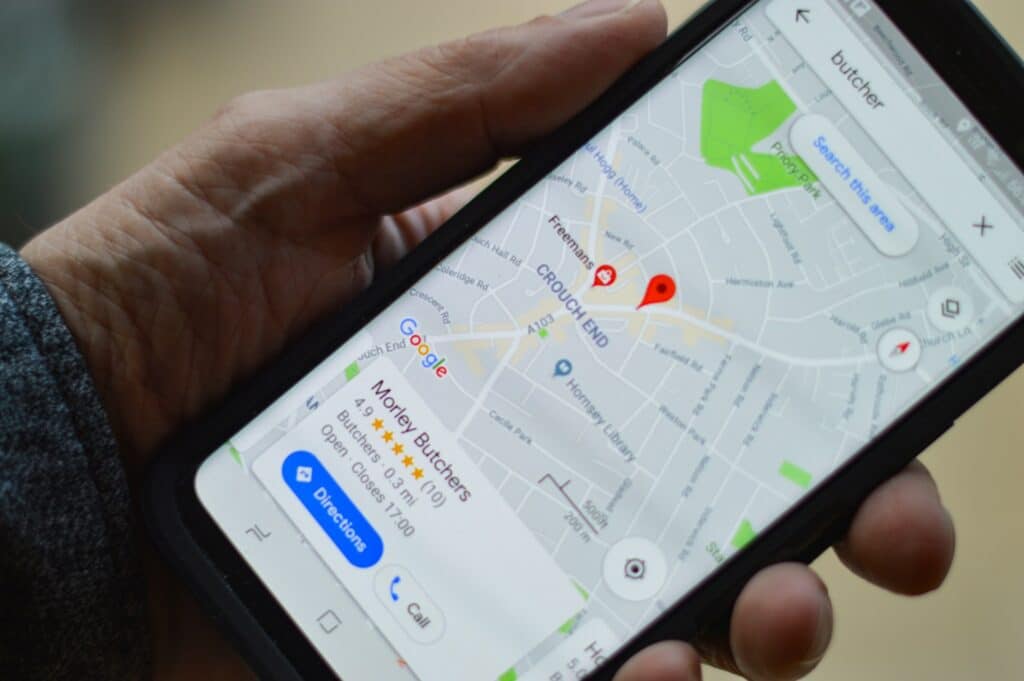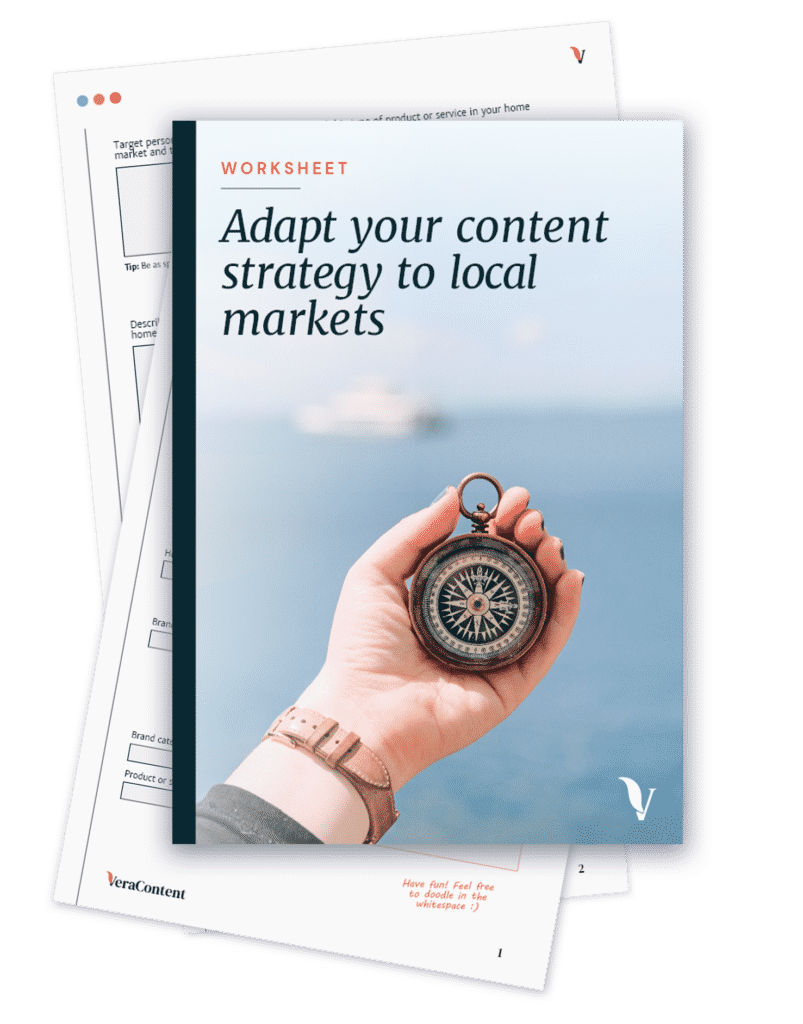When it comes to scaling your business online, global SEO might sound like the ultimate goal, but is it really the best way to boost your bottom line? For many brands, a hyper-targeted local SEO strategy delivers more meaningful results and higher conversion rates.
As the digital marketing space becomes increasingly crowded, your SEO approach can make or break your marketing ROI. So, what’s the smarter choice: broad international reach or razor-sharp local targeting? That’s where the local SEO vs global SEO debate gets real.
Keep reading as we break down both strategies in this in-depth guide. You’ll learn how they work, what they demand and, most importantly, which one is more likely to drive sales for your business. You’ll also find real examples from our work at VeraContent.
What is global SEO?
Global SEO focuses on optimizing your website to rank highly in search results for audiences in different regions and languages. To attract a diverse range of users with varying interests and cultures, you also need to tailor and localize your content to appeal to different markets.
Key elements of global SEO include:
- Culturally relevant and localized content
- HTML attributes to tell search engines which version of your website to show users
- Separate but complementary SEO strategies for each market
- Multilingual keyword research tailored to each target segment
- Adapting language, images and layouts to local customs and preferences
- Hreflang tags and site structures that can cater to different regions
Global SEO tends to target broader and more competitive keywords to attract different audiences. If your company is internationally focused, it can be highly effective if done well.
See also: What is international SEO and how to do it the right way
What is local SEO?
Local SEO, on the other hand, is about optimizing your online presence for users in a specific geographic area. It typically focuses heavily on an organization’s Google Business Profile and its integration with Google Maps.
Ultimately, your goal with local SEO is usually to get your business to rank among the top three businesses in the Google Map Pack or Local Pack. Local Pack is the mini-map with business listings you see when you search something like “pizza near me” on Google, and Google Map Pack is the order in which you see business listings when you search for something on Google Maps.
Google Map Pack focuses on a larger geographic area than Google Local Pack, but both are important.
“If you’re not in one of the top three slots in those databases, chances are people are going to your competitors.”
– Joshua Saxon, Managing Editor at Relate Content Marketing
Key elements of local SEO include:
- Maintaining a strong Google Business Profile
- Implementing local search keywords
- Ensuring NAP (name, address and phone number) consistency
- Listing on local online business directories
- Managing reviews and ratings
- Optimizing your business’ position in Google Maps searches

Key differences between global and local SEO
Global SEO is about reaching an audience on an international scale. Conversely, local SEO focuses on targeting more specific geographic areas and users.
Ultimately, the difference comes down to who you’re targeting, where they are and how much that matters to what you do. Local SEO optimizes your business to a specific area, while global SEO optimizes to your niche or industry.
This table shows some key differences between the two:
| Aspect | Global SEO | Local SEO |
| Audience | International and multilingual | Specific geographic area |
| Keywords | Generic but language- and market-specific | Geo-specific, local intent (like “near me” or “in X place”) |
| Content | Broad topics, adapted to different cultures | Hyper-local, often event and service-focused |
| Key technical aspects | Hreflang tags, complex site architecture | Google Business Profile optimization, local schema markup |
| Backlinks | International authoritative sites | Local directories and partnerships |
| Common tools | SEMrush, Ahrefs, Google Keyword Planner | BrightLocal, Moz Local, Google Business Profile |
Which one drives more sales?

The SEO strategy that drives the most sales largely depends on the type of business. Typically, a local brick-and-mortar business that can only serve customers in a limited geographical area has more success with local SEO.
On the other hand, businesses that lack geographic limits on products they sell, like businesses that ship e-commerce purchases internationally or sell digital products, are more likely to find success with global SEO.
While global SEO is harder to rank for, it’s great for generating broad awareness and leads across international markets. For companies in the growth stage or for those entering new territories, it can be crucial to their success.
However, global SEO has become “standard” in marketing; many local businesses implement global strategies when local strategies may be better suited for their needs. While these can look better on the surface due to higher impression and engagement numbers, looks can be misleading.
“Imagine a London-based company writes a blog about building a patio. People interested in patios find their website and think they’re specialists, which is great. But the post isn’t optimized for location, so users in Los Angeles find it. Ultimately, those potential customers are useless. They’re never going to use those services if they live 5,000 miles away.”
While local SEO brings less overall traffic than global SEO, that traffic might be more valuable, as local SEO attracts people further down the sales funnel. If someone looks up “hair salon near me,” for example, they’re usually already at the commercial stage.
Local SEO tactics that drive conversions

To effectively attract local leads, implementing a few key tactics can help your business stand out.
Optimize your Google Business Profile
Your Google Business Profile (formerly known as Google My Business) is key to your local SEO strategy.
“It’s the most important asset for local SEO. It’s how Google connects users to nearby businesses, in both Google Search and Maps.”
– Irene Morcillo, Project Manager at VeraContent
Make sure your profile is completely updated by following these steps:
- Ensure your business information—including your address, phone number, and other details like wi-fi offerings and wheelchair accessibility—is complete and fully updated. On your profile, you can see a bar indicating your profile strength. Get it to “Looks Good!” by filling out every section.
- Cross-check your Google Business Profile information with the business details listed on other websites to ensure they match.
- Have at least 10 high-quality and descriptive photos on your profile, and try to upload at least one new photo a month. Useful photos can include the inside and outside of your business, as well as your products or company vehicle, if you’re a mobile business.
- Aim for at least one new review a week. In the next section, we’ll discuss how to handle reviews in greater depth.
- Post publicly on your profile at least once a week. This can significantly improve rankings, as many businesses don’t post on their profiles at all. Aim for 250–300 words and a photo.
- Stay on top of any questions posted to your Q&A section. Anyone can ask and answer questions there, so responding as soon as possible helps avoid any possible misinformation from other users. To get out in front of your audience, you can also ask and answer your own questions. Google encourages this, so you won’t be penalized.
- Add products and services, if applicable.
- Set up the messaging button in your profile. This allows potential customers to text your phone directly. You’ll get a new number through Google’s Allo, so there’s no need to worry about sharing your real phone number.
Manage reviews effectively
Reviews are an important part of both your Google Business Profile and overall local SEO strategy. A 2025 survey showed that 96% of consumers read reviews for local businesses at least occasionally, and 83% of consumers read reviews on Google.
Google greatly values ratings, both directly from your Google Business Profile and third-party sites like TripAdvisor, when ranking your business. Google sometimes aggregates and displays reviews from other websites on your profile.
Most consumers expect a business to have at least 20 reviews before trusting its overall rating, and half say that reviews from the last month alone significantly impact their opinion of the business. While offering incentives (like discounts or prizes) may sound like an easy way to encourage reviews, most official platforms don’t allow it and could penalize you if you’re caught.
Instead, just asking can dramatically increase your reviews. Asking via email is likely to elicit a response from at least 40% of consumers. Asking in person, through social media and via SMS are all seen as equally effective (27%).
For quicker-interaction businesses like restaurants, over 70% customers expect a request within a day. Surprisingly, beauty, entertainment, healthcare and service interactions all have a similarly longer window where customers expect a request of about three to seven days.
Responding to reviews promptly is almost, if not more, important than getting them. Commenting on all reviews, not just positive ones, can nearly double consumers’ stated likelihood of using your business.
“I think these days, with AI tools, there’s no excuse for not replying to everything.”
– Joshua Saxon, Managing Editor at Relate Content Marketing
81% of consumers expect businesses to respond to reviews within a week of being posted. If you’re unsure how to respond to a negative review, don’t overthink it.
“Businesses often take bad reviews personally, but a bad review often says more about the customer than you. Taking the time to write a sincere response makes you seem fair and honest.”
– Joshua Saxon, Managing Editor at Relate Content Marketing
Use local keywords naturally
You probably know that it’s important to target local and even hyper-local keywords to boost your visibility, but it’s not always as easy as plugging in “your industry + your city.”
Here’s how to get the best results from local keyword research:
- Brainstorm a list of keywords related to your business and what you’re promoting. Think about how people actually search when they want something nearby: often a service + a location + an intent modifier (“open now”, “near me”, “best”, etc.). Don’t forget common variations of spelling your region or city, like including both “Los Angeles” and “LA.”
- If you’re getting stuck, search on Google using one of your keywords and check the related searches box. You can also just start typing into Google and see what it suggests to autocomplete your query.
- If you live in a large metropolitan area, think beyond your city name. Using neighborhood-level keywords (like “Italian restaurant in Forest Hills” vs. “Italian restaurant in Queens” or “Italian restaurant in NYC”) can help you stand out.
- If your audience speaks multiple languages, ensure you conduct keyword research for each of those languages. For example, a business in Barcelona would target keywords in Spanish, Catalan and English. If you don’t speak one of your relevant target languages, consider working with a local agency or linguist who’s a native speaker of that language who can help you. Direct keyword translation is rarely effective.
- Consider why people are searching for your site and tailor your keywords accordingly. You may have more than one that you think is relevant. The most popular SEO intents and relevant keyword examples are:
- Navigational: “Zoom login page”
- Transactional: “Hair salon near me open now”
- Informational: “I’m locked out of my apartment, what do I do”
- Commercial intent: “Best plumbers in Austin”
- Analyze your competitors’ pages to find the keywords they’re targeting. Pick pages that are consistently in the top four in your keyword searches. Check out their content, what keywords they seem to be using and how they’ve incorporated those keywords into their pages. However, also consider the gaps in their strategy and how you could gain a competitive edge.
Once you have a list of keywords, research their popularity using tools like Google Keyword Planner or Google Trends. Strategic keyword placement is crucial and you can include keywords in:
- Title tags
- Meta descriptions
- Headers
- Image alt text
- Body content
However, it’s better to have just a few well-placed and natural-sounding local references than to keyword overload, which can damage both the quality of your content and your SEO ranking.
See also: How to manage an effective multilingual SEO campaign
Build local backlinks
In local SEO, where backlinks come from can be just as important as the backlink itself. When local websites link to you, it highlights your authority in a specific area and your relevance to that community.
Here are some ways to build both high-quality backlinks and relationships with your community:
- Partner with complementary (not competitive) local businesses. For example, a wedding photographer could partner with a florist or venue.
- Sponsor events or community initiatives. They often create backlinks from the event’s website or promotional materials. The event can be directly relevant to your business (like a marketing agency sponsoring a local startup meetup) or not (a coffee shop sponsoring a youth sports league).
- You can also host or co-host local events, such as a local clothing store hosting a pop-up shop featuring local designers. Promoting the event on places like Eventbrite, Meetup and community calendars often gives a plethora of backlink opportunities. Make sure you have a press release or media kit on your website for easy referencing and linking.
- Join local directories and associations. These can include chambers of commerce, city or regional business registries and industry-specific local directories. Make sure only to use trusted and non-spammy ones. Quality is better than pure quantity here.
- Get featured in local media or blogs by reaching out to local news outlets, niche bloggers or influencers, and relevant university publications. You can pitch a story or offer commentary on something relevant. Journalists and bloggers are always looking for local angles.
Create localized content
Like backlinks, local content demonstrates to Google and users that you’re an integral part of the local landscape. Local content helps you more naturally rank for target keywords, builds trust with users and positions your brand as knowledgeable.
There are two main content types to consider:
- Evergreen content (like a Chicago-based housing agency writing an article called “What to know before renting in Chicago”) has long-term search value. It usually targets users who are actively searching for local options and are usually close to making a decision.
- Seasonal content tied to local events, holidays, trends or news can boost your short-term visibility and demonstrate that your brand is active in the community and within your industry. A language school in London could write a post about “What the 2025 changes in the Cambridge exam mean for you,” for example.
Case studies: VeraContent partners with Universidad Europea & Remitly to create localized content for specific audiences around the world
At VeraContent, we’ve seen firsthand how powerful localized content can be. Universidad Europea partnered with us to produce SEO-driven blog articles tailored to audiences across Spain and Latin America. By combining evergreen pieces on topics like teacher certification with culturally specific seasonal content for markets such as Colombia and Peru, we’ve helped the university connect with prospective students in meaningful, localized ways.

For example, we created a detailed article on STEM education targeted specifically at audiences in Ecuador, another focused on the highest-paying jobs in Colombia and a culturally relevant piece exploring shopping addiction.
These targeted examples showcase how tailored content can engage different markets with relevant and timely topics.
Read the full client story to learn how we support Universidad Europea with 32 high-quality SEO articles each month across four countries.
Work with native speakers and SEO specialists
To truly connect with local audiences and rank well on search engines, your content needs to be crafted by people who understand the language, culture and search intent of your target market. This means creating content that resonates locally and speaks authentically to your audience.
Our work with Remitly highlights this perfectly. We collaborated with over 25 native-speaking content creators across 5 languages, including Spanish, German, Italian, English and Turkish, to produce 110+ articles in 2024 alone. Many of our writers bring personal experience as immigrants or locals, allowing them to add invaluable insight and authenticity to complex topics like settling into new cities or exploring national traditions.

This combined approach of SEO expertise and native cultural knowledge is what makes the content genuinely effective.
Read the full story of how Remitly uses VeraContent’s global network to create content that matters.
How to build a global SEO strategy that works

Global SEO requires precision in both technical and content aspects. Here are some key areas to focus on that can contribute to your success.
Target market research
While global SEO may seem to imply targeting as many markets as possible, the most effective strategies target the best markets for them. Using tools like Google Analytics or Search Console, examine your traffic by region and language to identify specific markets or languages you want to target.
You can also use Semrush, Ahrefs or SimilarWeb to analyze your competitors’ traffic by country, keyword usage and local market share. Combine this with your current audience to identify any potential gaps in your market that you may be able to fill.
Finally, keep in mind both the languages AND the markets you target. For example, if you see that users are coming from (or you want to target) Canada, but not France, you’ll want to make sure that your French SEO strategy is adapted to Canadian French.
Keyword research
As previously mentioned, translating existing target keywords into your target languages is rarely effective. It fails to take into account cultural differences, such as the use of different terms in various countries (“computadora” in Latin America vs. “ordenador” in Spain) and how native speakers actually search. Users from Portugal, for example, often use long-tail keywords when searching.
Most SEO tools have location filters to identify search volume, difficulty, long-tail variations and local intent for keywords in different markets. However, it’s usually best to work directly with someone from that country when planning your strategy.
“Even though I work heavily in SEO and live in Spain, I never take on clients asking for SEO in Spanish. I always recommend that they go with a native speaker. When you’re doing keyword research, you need to really know the terminology and how people actually search for things.”
– Joshua Saxon, Managing Editor at Relate Content Marketing.
See also: Spanish SEO: 4 things to consider before launching a strategy
Site structure
The setup of your website can significantly impact how your pages appear to users in different markets. Global SEO involves creating separate sections on your website for each target audience.
You’ll need to decide whether to use
- ccTLD (example.de), which offers strong geotargeting and greater trust in more skeptical markets, such as Germany. However, you don’t have shared SEO authority, and it’s difficult to scale and expensive.
- Subfolders (example.com/de/), with centralized domain authority, are easier to manage, preferred by Google and cost-effective. However, they have weaker geo-signals and aren’t as locally branded.
- Subdomains (de.example.com) have some geo-targeting potential and organizational flexibility. However, Google treats them as separate entities, and they can lead to duplication or cannibalization if improperly managed.
Hreflang tags
These are HTML attributes that tell search engines which language and region to show users based on their location and language preferences. In international SEO, they’re essential, particularly when you have similar or duplicate content in different languages or for different regions.
They’re relatively simple to implement. You can insert the code in the HTML head of the page, in the HTTP header for files like PDFs, and in XML sitemaps. You can test your codes using tools like Google Search Console or Screaming Frog SEO Spider.
Ensure you use region codes correctly by consistently using the format language-region (e.g., es-mx and en-gb). Also, ensure you have a default page when there is no clear region or language match. All pages should reference themselves and link to the other pages.
See also: Hreflang tags: What they do and how to add them in WordPress
Website optimization
Once you’ve set up your international pages, it’s time to optimize them for each market.
Some of the most important things to optimize include:
- Technical and on-page elements, including title tags, meta descriptions and headers, ensuring they’re in the local language and formatting.
- CDNs (Content Delivery Networks) and geo-targeted hosting make your pages load faster, improving both your user experience and SEO ranking.
- Ensure your internal links only link to that language or regional variation. For example, your Spanish website shouldn’t link to your German website.
Structured data or schema needs to be localized, including currencies, local business hours in the correct time zone, and country-specific details for things like product schema.
See also: 10 best practices to improve your multilingual website SEO
Culturally relevant content
You can both localize (relevant) content you’ve already created on your primary page and create new content for individual markets. Google values high-quality, engaging content with relevant keywords effectively implemented—again, avoid keyword stuffing.
Make sure your content is localized for each market, not just translated. Tailor everything to each audience’s preferences and needs, including imagery, idioms, offers, slogans and more. FAQs, product references and things like holiday tie-ins should reflect local life. While a website targeting the UAE can feature Christmas offers or content, as many people celebrate Christmas as a fun, secular holiday, it is advisable to focus more on holidays like Eid.
The best strategy here is to work with freelancers in each market that can create or localize content that’s hyper-tailored to each audience’s needs. Since that can add up to a lot of management, you can also work with a global content agency that works with and coordinates freelancers in a variety of markets, making your strategy more seamless.
Download our free worksheet to get started with localizing your content:

Backlinks and authority
Like local SEO, backlinks demonstrate to Google that both your website and content are valuable and trustworthy. Building backlinks in each of your target markets helps build authority, boost regional search rankings and drive referral traffic.
Some ways to get quality backlinks in your target markets include:
- Partner with businesses, organizations, events or charities in your target countries.
- Guest post on regional blogs or websites.
- Submit your website to reputable regional directories.
- Share newsworthy stories about your company with regional news outlets and PR agencies.
- Create high-quality content that’s relevant to your local audiences to naturally attract shares and links from regional sites.
- Engage with influencers who can share your content and create backlinks through their websites or collaborations. Given Google’s announcement that they’re now going to index Instagram posts, this is more important now than ever.
Focus on relevance and quality over volume. Ensure your profile is diverse and monitor your backlink profile regularly using tools like Ahrefs or Semrush. Spammy or purchased backlinks can harm your reputation and SEO rank.
Global SEO vs. local SEO: How to choose the right approach
Between global and local SEO, neither one is “better” than the other. Choosing between the two depends on:
- Your business model, and whether you operate more internationally or locally, will influence your SEO approach.
- Your audience—whether spread worldwide or concentrated geographically—plays a key role in your decision.
- Your goals. Do you want to increase brand awareness, drive foot traffic, boost online sales, or something else?
- Your resources, and whether or not you can invest in technical global SEO, which can be costly, are another key factor.
Many companies can also benefit from a mix of both. And even if you’re opting for an international strategy, make sure your content is tailored to each market instead of a one-size-fits-all version. Local idioms and customs matter, even when you’re a global brand.
Choose strategy, not scale
Choosing between local SEO and global SEO ultimately comes down to selecting the one that best suits your audience.
The best results come from working with a team that understands more than just SEO. At VeraContent, we combine technical SEO expertise with deep experience in local content creation, powered by native-speaking linguists who truly know your markets.
Want to build an SEO strategy that actually connects? Get in touch with our team to find out how we can help.

